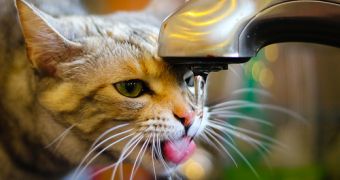A new discovery made by Rice University researchers, boosts up the power of a common disinfectant, and provides a new and ecological way of killing aerosol- and water-borne viruses.
Andrew Barron and Qilin Li, from Rice University, along with their teams, discovered that adding silicone to titanium dioxide (a common disinfectant) significantly increases its sterilizing abilities.
Barron, Rice's Charles W. Duncan Jr.-Welch Professor of Chemistry and a professor of materials science, explained that this method consists in “taking a nanoparticle that everyone's been using for years and, with a very simple treatment,” improving “its performance by more than three times without any real cost.”
The Rice team started modifying titanium dioxide two years ago, when Li, who at the time was an assistant professor in civil and environmental engineering, focusing on water and wastewater treatment, asked Barron for help in looking for new photocatalytic nanomaterials to disinfect drinking water.
At some point, students in Barron's lab heated titanium dioxide, but nothing significant came from this, at least until graduate student and co-author Michael Liga saw the data.
When he noticed that the performances of titanium dioxide were greatly enhanced, he asked fellow graduate student Huma Jafry what she had done.
Jafry was the paper's first author, and Barron recalls she said: “I didn't do anything.”
After a more detailed discussion, Barron discovered that Jafry, who has since earned her doctorate, used silicone grease to seal the vessel of P25 before heating it.
So the researcher verified this by carrying out several tests with nonsilicone grease, and they all revealed no change in P25's properties, whether the sample was heated or not.
Obviously, further work revealed the perfect balance between titanium dioxide and silicone dioxide, and this happened just in time for the discovery to have a maximum impact.
Barron explained that titanium dioxide is used to kill viruses and bacteria and to decompose organics via photocatalysis (exposure to light, usually ultraviolet).
The material occurring naturally is also used as a pigment in paints, in sunscreen and even as food coloring.
So Barron said that “if you're using titanium dioxide, just take it, treat it for a few minutes with silicone grease or silica or silicic acid, and you will increase its efficiency as a catalyst.”
Barron's lab conducted the experiments on a commercial form of titanium dioxide called P25, and he said that it's just like “taking white paint pigment and functionalizing it with sand.”
And thanks to the material's increased catalytic punch, disinfecting a volume of water that once took an hour would now take minutes.
“We chose the Yangtze River as our baseline for testing, because it's considered the most polluted river in the world, with the highest viral content,” the Professor said.
“Even at that level of viral contamination, we're getting complete destruction of the viruses in water that matches the level of pollution in the Yangtze.”
And even if using a smaller amount of treated P25 takes longer, it works just as well, he added, ”either way, it's green and it's cheap.”
The enhanced P25 has a huge potential and here is why: in developed countries, photo reactors in centralized treatment plants could be much more efficient in killing bacteria and inactivate viruses in water supplies, while minimizing the formation of harmful disinfection byproducts.
But the largest impact would be in developing countries, where water is disinfected by being exposed to sunlight for heat and ultraviolet radiation (the SODIS method).
Li explained that “in places where they don't have treatment plants or even electricity, the SODIS method is great, but it takes a very long time to make water safe to drink.
“Our goal is to incorporate this photocatalyst so that instead of taking six hours, it only takes 15 minutes.”
“Here's a way of taking what is already a very good environmental catalyst and making it better,” Barron said.
“It works consistently, and we've done batch after batch after batch of it now.
“The methodology in the paper is the one we routinely use. As soon as we buy P25, we treat it.”
This research was supported by the Robert A. Welch Foundation, the US Navy and the National Science Foundation Center for Biological and Environmental Nanotechnology, and the Rice professors and their team reported in Environmental Science and Technology, an American Chemical Society journal.
Another great news is that despite the fact that Barron describes himself as being a 'serial entrepreneur', this discovery was put in the public domain.
The potential benefits to the society are far more important than any thoughts of commercialization, the researchers said.
Now here is something we don't hear every day!

 14 DAY TRIAL //
14 DAY TRIAL //